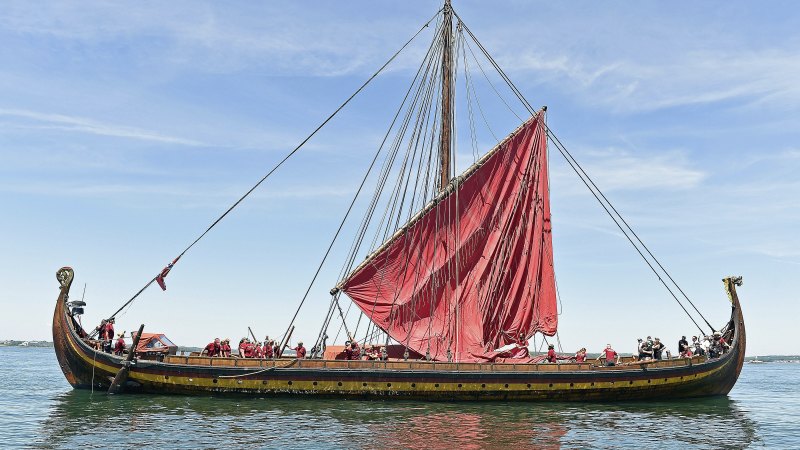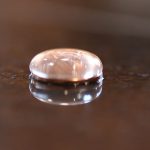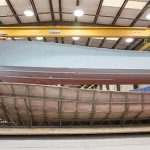The Vikings originated from the Scandinavian countries of Norway, Denmark, and Sweden. From there they sailed in wooden Viking longships, raiding coastal towns throughout Western Europe and the British Isles.
The ship’s crew sat inside the hull and powered the longships using long wooden oars, being occasionally aided by the use a sail.
The longships were also known as dragon-ships because of the fearsome figureheads at the bow and stern posts of the hull.

This is an article on the Viking longships, their types and design. We begin by having a look at the various types used as warships and supply ships.
Types of Viking Longships
There were numerous types of Viking longships, defined by the number of crew or rowers. They were all uniquely designed and built by master craftsmen. A selection of these longships are listed below:
· Karvi – used as a fishing vessel but often commissioned by the military and powered by about fifteen rowers.
· Skei – a warship powered by about thirty rowers.
· Busse – used as a large cargo ship, powered by around thirty rowers.
· Dreker – a large warship used for raiding powered by up to sixty rowers.
Design of Viking Longships
There were various categories of longships designed for different purposes such as fishing, trading/supply, military, and raiding. This governed their length, which ranged from around fifty feet for fishing and trading longships up to one hundred and forty feet for the largest warships.
As I said in the introduction, the design and build method was carried only in the master shipwright’s head who would have been very experienced in the design and construction of Viking longships. No actual plans for these ships exists to this day.
However, we do know that they were designed to be relatively light, allowing them to be lifted out of the water and beached or carried across strips of land between water. They were also designed with a shallow draft mainly to facilitate river passage when raiding or trading. The Viking shipwrights (marine carpenters or joiners) were the first to use the clinker build method of fitting the strakes to the stems. This involved overlapping and interlocking the boards to give extra protection against leaks. (See sketch below.)

Design of Viking Longship Hull
The keel was carved in a T-shape invariably from a straight piece of mature oak tree, and designed in such a way that when the bow and stern posts were fitted or carved, it resembled a long symmetrical shape known as a Hulk (banana shape). The bow and stern posts were carved at a taper to accept the curved strakes, which when fitted allowed both the bow and stern to be pointed. This enabled the longship to go astern quickly or without having to maneuver or turn around. The figureheads much depicted in Viking lore were carved out of the bow, stern posts, or both.
The strakes and stems were also designed in a curve. The strake boards were recessed at the inner edges to facilitate the inclusion of animal hair and tar from pine tree sap as a leak preventative, before being fitted in a clinker-built mode along the stems.


The hull sides were fastened together using wooded spars in later longship designs. This gave the ships greater solidity and reliability in rough seas.
Power Design Features of Viking Warships
Oars Design
The oars were made in one piece mainly from spruce which gave them their properties of flexibility along with lightness. Oars were designed in various lengths being between 15 and 25 feet long. The handles were carved into round or square section with the flat blades curving upwards at the tips. Most oar designs incorporated a leather strip wound around the oar handle where it was located into the rowlock.
The rowers sat on wooden boxes that held their clothes, swords, armor, and personal possessions, and from here they rowed with perfect synchronization.
Rowlock Design
There were several designs of rowlocks. In one design the rowlocks were carved out of the fork joint of a tree branch, with the fork providing a backstop for the oar. A rope, which passed through a hole made in the rowlock, was tied around the oar keeping it tight against the backstop.
Another design, utilized mainly on Viking warships, used iron hooks fastened to the gunwales, with the oars being lashed onto the hooks by ropes.
The most popular rowlock design appears to have been one where holes were made into the longship’s hull below the gunwale. The strake board that the holes were made in was designed to be stronger than a normal strake as it had to withstand the torque and thrust produced by the lever action of the oars against the sea. The oar holes had a slot cut into them to allow the wide blade to pass through. The apertures could be lined around the inside with leather acting as a bearing which reduced friction against the leather protective strip around the oar. When the oars were stowed in port, or when rough seas were encountered and the oars withdrawn, the oar holes could be covered over with circular wooden discs.
Sail and Mast Design
The single sail was designed to add to the longships propulsion and was located amidships on a single mast. The mast was held securely in position by a block of oak fixed to the bottom of the hull between two stems and supported by various wooden slats.
The sail was made from spun wool, being up to 40′ across and could be lowered and raised as required; a later design used a wooden spar attached to the bottom edge of the sail to facilitate sailing close to the wind.

Steering Design
The longboat was steered by a large rudder situated aft on the starboard side of the hull. Its design resembled an elongated broomstick, starting off at the top in a round section handle, flaring from about from about the middle section ending in a flat fan-tail blade.

The rudder appears to be the only chink in the longships design as it seems to be a bit over designed, having numerous ropes, slings, supports, and levers, as well as being mounted on the aft starboard side of the hull. However the captain was able to maneuver the ship using the rowers or the sail along with the rudder.



Comments are closed